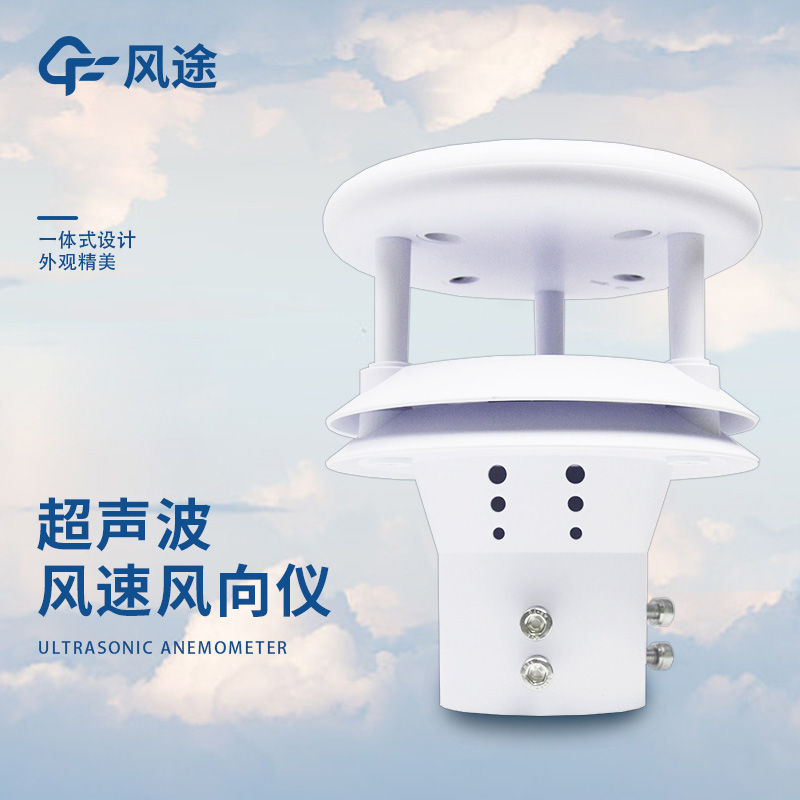Shandong Fengtu IOT Technology Co., Ltd
Sales Manager:Ms. Emily Wang
Cel,Whatsapp,Wechat:+86 15898932201
Email:info@fengtutec.com
Add:No. 155 Optoelectronic Industry Accelerator, Gaoxin District, Weifang, Shandong, China

Sales Manager:Ms. Emily Wang
Cel,Whatsapp,Wechat:+86 15898932201
Email:info@fengtutec.com
Add:No. 155 Optoelectronic Industry Accelerator, Gaoxin District, Weifang, Shandong, China
time:2024-06-13 08:42:41 source:Weather Station viewed:838 time
An anemometer is a precision instrument specifically designed to measure wind speed and direction, which is important in meteorology, environmental monitoring, aviation, navigation, as well as construction and engineering. There are a variety of measurement principles used in anemometers, each with specific advantages and limitations.
The following are three common types of anemometers:
1. Three-cup anemometer
A three-cup anemometer is a wind speed measurement tool that consists of three hemispherical cups and a wind vane. These cups are mounted vertically on a shaft, and when the wind blows, they rotate against the wind at a speed proportional to the wind speed. The wind vane, on the other hand, points in the direction of the source of the wind, providing information about the direction of the wind. By measuring the rotational speed of the wind cups, this can be converted into a numerical value of wind speed. This type of anemometer is widely used in meteorological monitoring and environmental assessment. It is favoured for its simple structure and low cost, but may lack stability in extreme weather conditions.
2. Propeller Type Anemometer
A propeller-type anemometer is a device that can measure wind speed and direction simultaneously. It measures wind speed by means of a rotating propeller, and the faster the speed, the greater the wind speed. The direction of the wind is determined by the pointing of the end of the device, pointing in the direction from which the wind is blowing. This type of anemometer is popular because of its simplicity of operation and ease of reading data.
3. Ultrasonic Anemometer
An ultrasonic anemometer determines wind speed and direction by measuring the effect of wind on the velocity of ultrasonic waves travelling. It has no moving parts, responds quickly and displays wind changes in real time, and requires little maintenance because of its simple construction.
How to choose an anemometer?
There are several factors to consider when choosing the right anemometer and wind direction meter for your needs, and here I offer some suggestions.
1. Approvals and standards: Consider whether the anemometer has the necessary approvals, which may be important for certain professional or scientific applications.
2. Installation environment: Choose the type of anemometer that is suitable for the environment you are observing in, for example in areas with a lot of snow or ice, you need to choose a device that can adapt to these conditions.
3. Budget: Depending on your budget, choose the right anemometer at the right price. There is a wide range of prices, from budget to high-end professional models.
When choosing a specific one, you can consider the following aspects to see if the product meets your needs.
1. Accuracy: If you need high accuracy, choose a professional grade anemometer.
2. Ease of use: If you want simple operation, choose a device with a user-friendly interface.
3. Harsh environment: In snowy or icy places, choose a weather-resistant anemometer.
4. Budget: If budget is limited, look for cost-effective options.
5. Durability: if you need a durable device, choose an anemometer made of sturdy materials.
6. Multi-function: If you need to measure parameters other than wind speed and direction, choose a multi-function weather station.
7. Output type: Depending on the data you want to use, choose an anemometer with analogue or digital outputs.
In short, according to your needs, choose the most suitable anemometer from the product list.

automatic weather station manufacturers fengtu is a manufacturer of automatic weather stations and a provider of environmental monitoring solutions, providing automated meteorological observation stations that collect and record weather data....
Ultrasonic wind speed sensor is a sensor used to measure wind speed, it adopts the ultrasonic principle and utilizes transmitting and receiving ultrasonic waves to measure wind speed. It consists of a transmitter, a receiver, a controller and a data processing unit. The transmitter transmits ultraso...
digital anemometer for only farming is a digital anemometer that measures wind speed and direction for use in weather stations, airports, agriculture, and more....
what instrument measures wind direction used to measure wind direction is called an anemometer and records wind speed, direction, and gust strength....